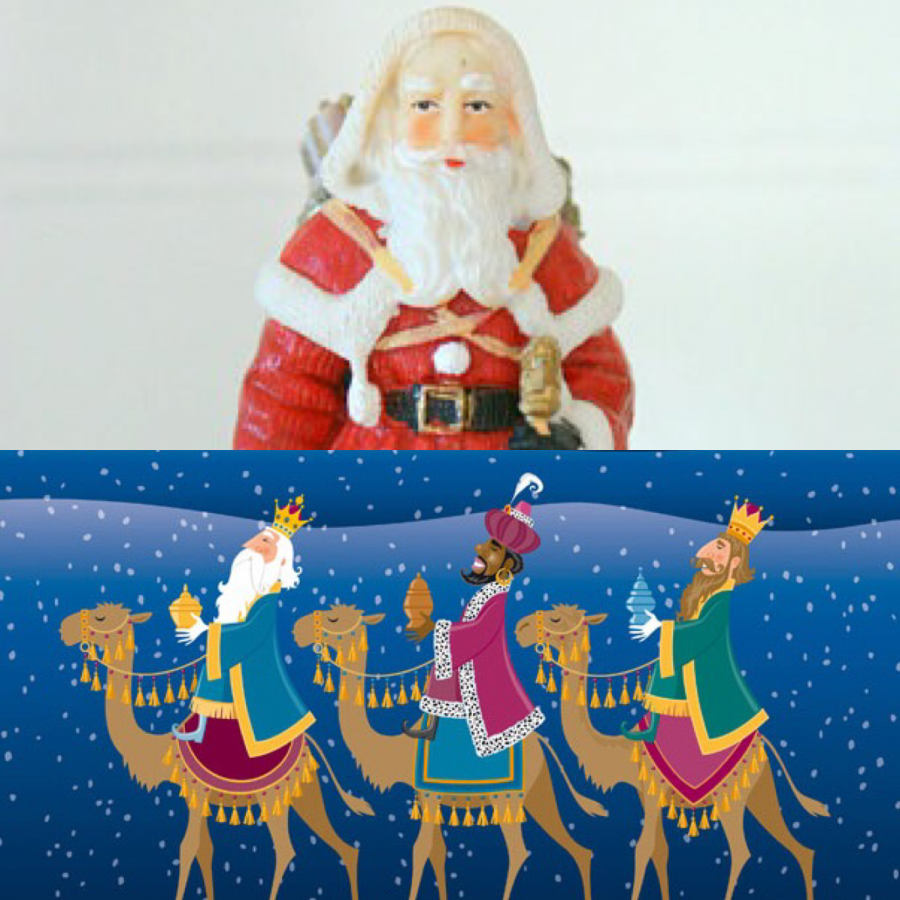December 15: Santa Claus Around the World
The crackling of a blazing fire, the frantic and eager sounds of wrapping paper ripping, the warmth of slurping hot chocolate—these are all associated with a traditional American Christmas. Christmas in America, as well as other countries, is often associated with gifts and time spent with family and friends. However, unlike America, other countries like Mexico, Spain, Iceland, France and Germany have different versions of Santa Claus, which is largely due to the different cultures and traditions.
Mexico- Les tres reyes magos
Instead of waking up on December 25 to presents from Santa Claus, children in Mexico have to wait until January 6 to receive gifts from the three kings, or los tres reyes magos.
El Días des los Reyes or Three Kings Day celebrates three wise men who welcomed the birth of Jesus with gifts of gold, frankincense and myrrh, according to NBC.
According to the Huffington Post, the gold represents Jesus’ standing as the “King of the Jews,” while frankincense represented Jesus’ standing as the son of God and myrrh represented Jesus’s morality.
In addition to gifts, El Días des los Reyes also comes with parades and food.
Spain
As opposed to Santa, the people of Spain and more specifically Catalonia, a region in Spain, have the Caganer, a Santa-like figure—except for the fact that he is squatting with his pants around his ankles.
Also known as the “defecator,” the Caganer originated in the 1700s from a peasant farmer version of the statue began to pop up around nativity scenes, according to USA Today. According to Smithsonian magazine, the pile of poop represents fertility and good fortune; if a farmer did not put out a nativity scene without the Caganer, it would represent a bad growing season.
However, in order to show respect, Caganer is often hidden in the corner and is never the center of attention, according to TIME.
Today, Caganer manifests itself as popular figures around the world such as former President Barack Obama and Queen Elizabeth, according to USA Today.
Germany
In addition to jolly old Saint Nicholas, German children must also face the anti—Saint Nicholas: Krampus.
Krampus is depicted as a half-goat, half-demon beast whose intentions are to beat people into being good.
According to National Geographic, Krampus has chains and bells which he uses to whip naughty children and to drag them to the underworld.
Krampus appears on December 6 along with Saint Nicholas and serves as Saint Nicholas’s opposite, according to Smithsonian Magazine. On this day German children check to see if their shoes are filled with presents from Saint Nicholas of a rod, meaning that they might have to face the wrath of Krampus.
Iceland
Icelandic children don’t just have one Santa Claus, but they have 13. Also called the Yule Lads, these guys are known for being merry yet mischievous. Like Snow White’s seven dwarfs, each of the Yule Lads has a distinct personality.
If a child is good for the year a Yule Lad will come and leave candy in their shoe. However, if they are naughty, the Yule Lads will leave spoiled potatoes, according to Smithsonian magazine.
Although you may be labeled a ‘good’ for the year, you are still not excused from a creature called the Grýla who takes children up to the mountains and boils them alive, according to nordicvisitor.com.
Icelandic children must also fear the Christmas Cat, a big black cat, who will devour anyone who is not wearing at least one piece of new clothing, according to nordicvisitor.com.
France
Instead of Santa Claus, French children call the jolly old man who gives out presents during Christmas Pére Nöel.
Pére Nöel just like Santa Claus travels around the world handing out presents to all the good boys and girls. Children in France often times will leave him treats and carrots for his donkey, according to frenchmoments.eu.
However, unlike Santa Claus, Pére Nöel is also accompanied by a coal-covered companion: Le Pére Fouettard or the Bogeyman who spanks naughty children.
Information compiled from NBC News, Huffington Post, Smithsonian Magazine, TIME, USA Today, Nordic Visitor and National Geographic.

Grade: 12
Position: Design/Visual Executive
Extracurriculars: WYSE, Mathletes, Student Council, Key club, NHS, Model UN




